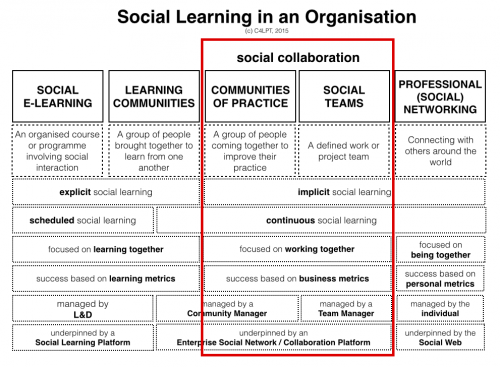Earlier this week I attended the CIPD L&D Show in London. Apart from the Learning and Skills exhibition that I attended earlier in the year, it’s the first event I’ve attended where the learning discussion is framed within an organizational or business context and I was interested to get to grips with the debate on the ground. How are organizations coming to terms with social/networked learning and increasing learner autonomy? It’s here I think some kind of serendipitous synergy might have come into play as one of the conference sessions was ‘Supporting Autonomous Learning to Support Business Objectives’ by Andrew Jacobs, a name that’s been starting to appear quite frequently on my radar of late.
The session did not disappoint. It set the context, outlined the challenges and put forward practical ideas for implementing an autonomous learning offer. I might add here that I was particularly pleased that I was up to speed with the 360 of ideas, concepts and thought leaders at the forefront of this new learning paradigm.
Not surprisingly, there’s anxiety about measuring outcomes in learner driven initiatives. However, the new mindset required was brilliantly illustrated with reference to the clothesline paradox. A term originally coined in the context of alternative energy. The premise is simple; you can either put your clothes in the dryer where the energy you use can be measured and counted, or you can hang them out on the line where natural energy works its magic to achieve the same result. So, there is in fact, an ‘informal’ energy economy which cannot be easily measured and credited. Just like…You got it.
Yep, I can’t help but love that one!!

It seems, as learning increasingly moulds to the ways of the web and learners become more autonomous, that learning outcomes can no longer be measured and counted in the same ways as before. When learning value is created it will be manifested and made meaningful in different ways and in different parts of the learning ecosystem.
Permeating the conference was the analogy that L&D practitioners ought to act more like engineers than shopkeepers. That is, concentrate less on selling products (i.e. courses) and more on diagnosing and solving business problems. I wonder if a few plumbing skills might also be called for in order to allow learning to flow, not only within the organization but to flow from the whole learning ecosystem that now permeates its walls. Ah, this might be what Mr. Jacobs was referring to when he says the role of L&D has to now become one more akin to that of a connector. Just like a plumber.
Another thing that the session made me think about that I hadn’t realised as being so important, or even possible, was encouraging self-organising groups. In education all the talk is of facilitating learning, usually in courses. However, what was being proposed here (I think) was to let the individual, the community or the work team articulate their own goals, seek their own solutions and be self-moderating (think community is the curriculum) all the while consuming/producing user generated content, just like on the web and in informal learning. A point that leads nicely back to the scene setting at the start of the session where the point was made that school leavers entering the workforce are now younger than Google. Yikes!! No wonder, I needed a drink.
So how glad was I that Lesley Price had alerted me to a wonderful community of people called L&D Connect and to their Tweet up afterwards. It was lovely of Lesley to introduce me to so many switched on and intelligent people and to dig deeper into the current learning landscape and the challenges organizations face. I look forward to continuing the conversation and to reading the blogs posts that seek to elaborate on work done during in the session. There is much to learn and do 🙂

This work is licensed under a Creative Commons Attribution-ShareAlike 4.0 International License.

